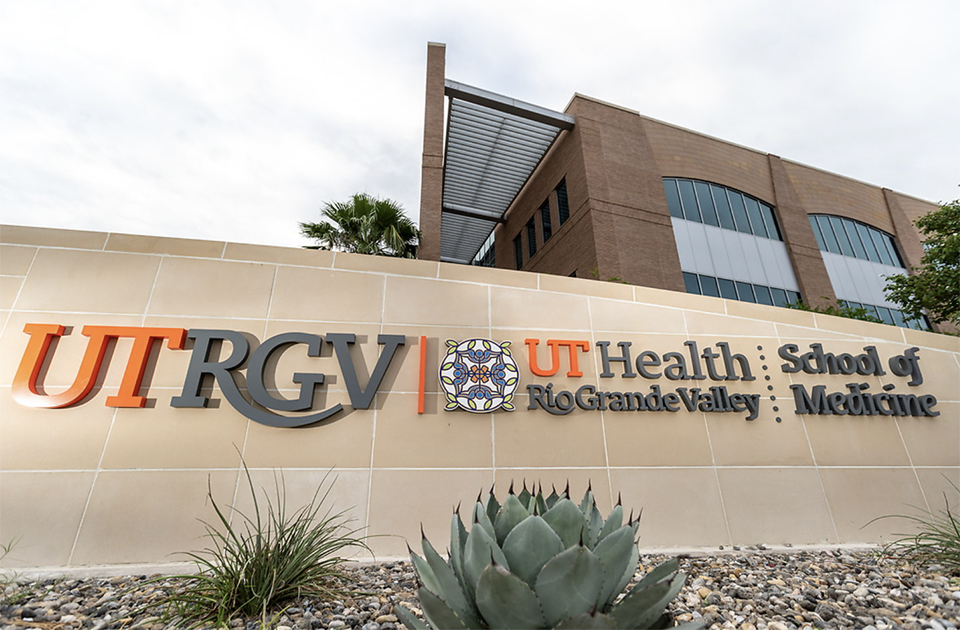
(UTRGV Photo by David Pike)
News Release | Research

(UTRGV Photo by David Pike)
Monday, December 4, 2023
Grants, Research, Health
By Saira Cabrera
RIO GRANDE VALLEY, TEXAS – DEC. 4, 2023 – The UTRGV School of Medicine received a supplemental grant from the prestigious National Institutes of Health (NIH) to continue research investigations on diabetes and Alzheimer's disease.
The "Assessing the Influence of the Human Lipidome on Risk of Diabetes in a Minority Population" is a 12-month supplemental grant focused on identifying lipidomic correlates – a large-scale study of pathways and networks of cellular lipids (organic compounds in the body) in biological systems – of co-morbid diabetes and Alzheimer's disease.
The primary grant awarded was for $2,367,499; the new supplement grant received was for an additional $369,720 – with a total of $2,737,219 to continue understanding the impact of co-morbid diabetes and Alzheimer's disease in the Rio Grande Valley.
THE GRANT

This new NIH award will expand a current project looking at lipids and diabetes. This additional funding will help continue what is already being studied at the UTRGV School of Medicine to understand the disease further and potentially develop new novel treatments.
Dr. Joanne E. Curran, professor of Medicine in the Division of Human Genetics at the UTRGV School of Medicine's new Department of Primary and Community Care and the principal investigator for the grant, said diabetes and Alzheimer's disease often occur together and may pose a greater health risk for those who may have them.
"Diabetes and Alzheimer's disease are what they call co-morbid, so they often occur together," she said. "People who have diabetes are at a greater risk of also developing Alzheimer's disease, and so this supplement funding, on top of my grant, will look at the influence of lipids on people with diabetes and Alzheimer's disease."
This additional funding aims to identify lipid biomarkers that influenced the development of both diseases.
IN THE VALLEY
Currently, in the Valley, there is a high incidence rate of diabetes – occupying 30% of the Rio Grande Valley population; nationwide, it encompasses 10%.
Throughout this three-year investigation, geared to the Latino/Hispanic communities of the Rio Grande Valley, Curran and other School of Medicine researchers have been tasked to think differently about combating diabetes to find what influences the disease and then understand those paths.
"Our idea is ultimately to find what influences this disease and then look at the pathways that these lipids work in, and that would give us new gene targets that we can look at," Curran said. "Then the idea is to find new genes that are druggable so they could become candidates for treatment."
SUCCESSFUL IDENTIFICATIONS
She explains that the genetics of diabetes haven't been successful thus far, even though both diseases identified a lot of genomic regions "we haven't been that successful with gene identifications."
So, the only way to find potential new targets for medication is to better understand gene identification by looking at something different from the standards of the disease, such as fasting glucose or HbA1c levels – the average blood sugar/glucose levels.
"Through this supplemental grant, we can continue finding different biomarkers," she said. "The idea is to continue to try, have and understand different phenotypes – observable characteristics – or biomarkers of diabetes that we can look at instead of just the standard ones that haven't got us very far."
Dr. Michael B. Hocker, senior vice president for UT Health RGV and dean of the UTRGV School of Medicine, said this NIH supplemental award will help continue the novel investigations conducted by faculty at the School of Medicine.
"Dr. Curran has pioneered the use of lipidomics in large-scale genetic studies, and her discoveries have improved our understanding of the genetic factors influencing risk for diabetes and obesity," he said. "This supplemental grant is only a reflection of the life-changing research Dr. Curran and our other researchers have conducted and will continue to do for the benefit of the patients of the Rio Grande Valley and beyond."
ABOUT UTRGV
The University of Texas Rio Grande Valley (UTRGV) was created by the Texas Legislature in 2013 as the first major public university of the 21st century in Texas. This transformative initiative provided the opportunity to expand educational opportunities in the Rio Grande Valley, including a new School of Medicine and a School of Podiatry, and made it possible for residents of the region to benefit from the Permanent University Fund – a public endowment contributing support to the University of Texas System and other institutions.
UTRGV has campuses and off-campus research and teaching sites throughout the Rio Grande Valley including Brownsville (formerly The University of Texas at Brownsville campus), Edinburg (formerly The University of Texas-Pan American campus), Harlingen, Weslaco, McAllen, Port Isabel, Rio Grande City and South Padre Island. UTRGV, a comprehensive academic institution, enrolled its first class in the fall of 2015; the School of Medicine welcomed its first class in the summer of 2016, and the School of Podiatric Medicine in the fall of 2022.